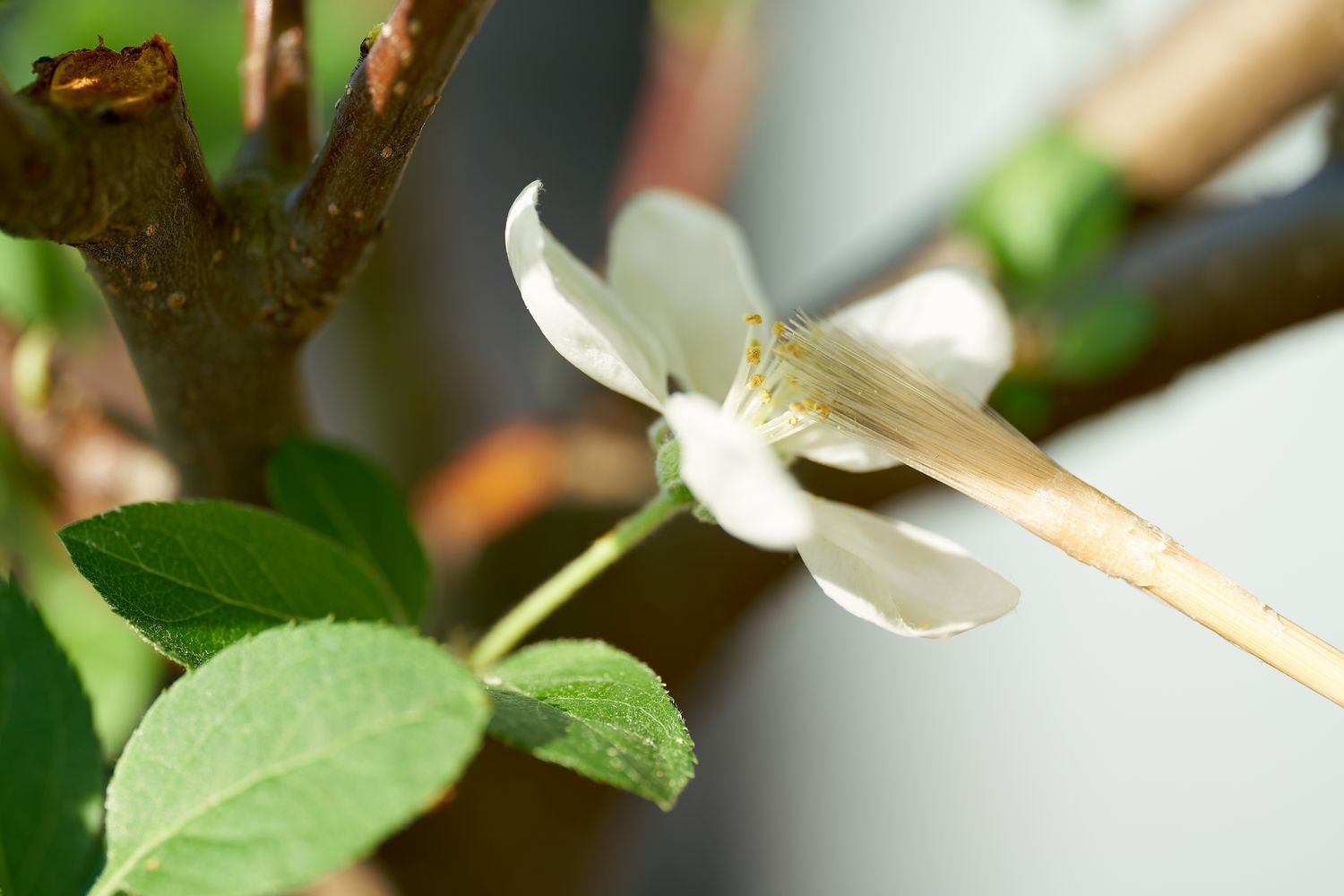
How to Hand-Pollinate Plants for a Prolific Harvest—Even When Bees and Butterflies Are Scarce
Many plants need to be pollinated to produce fruits or seeds to make more plants. But if pollinators are scarce in your area or you’re growing fruit-bearing plants indoors, hand-pollinating is essential. Hand-pollinating plants is a simple process that guarantees successful fruit development.
By taking control of your plants’ pollination, you can increase yields, enhance fruit quality, and experiment with selective breeding to develop improved strains. Below, experts explain how to hand-pollinate your plants for abundant fruit production.
- Susan K. Brown, an apple breeder and professor of horticulture at Cornell AgriTech, Cornell University
- Madeline Oravec, assistant professor of grapevine breeding at Cornell AgriTech, Cornell University, with a PhD in Plant Breeding and Plant Genetics
When Hand-Pollination is Required
Although nature typically does a good job of pollinating plants, there are times when human assistance is necessary. Susan K. Brown, an apple breeder and professor at Cornell University, says that individuals growing crops in greenhouses, high tunnels, or indoors may need to hand-pollinate their plants. This is often necessary due to the absence of natural pollinators, such as bees, butterflies, or hummingbirds, and the lack of wind. Gardeners also hand-pollinate to create hybrids, breed new varieties, and ensure pure seeds for saving.
Self-Pollination vs. Cross-Pollination
There are two main types of pollination—self-pollination and cross-pollination—and they can be easily distinguished.
Self-Pollination
Self-pollination occurs when pollen transfer happens within the same flower. Self-pollinating plants don’t require pollen from another plant to produce fruit. For instance, a tomato plant self-pollinates when pollen from its anther (the male part) lands on the stigma (the female part) of the same flower, allowing for fertilization.
Self-pollinating plants have male and female parts in the same flower, and the plants will have small, relatively inconspicuous flowers that shed pollen directly onto the stigma. Many self-pollinating plants have what is called “perfect” flowers, says Brown. “These flowers have male stamens, the yellow parts on lilies that shed pollen, and female pistil, reproductive organs within the same flower.”
Cross-Pollination
Cross-pollination involves the transfer of pollen from one male plant to another female plant. An apple tree, for example, requires cross-pollination, which can occur through the wind or the activity of bees. A cross-pollinating plant’s flower often has bright colors, strong scents, and nectar to attract pollinators.
Definition
- Stigma: The stigma of a self-pollinating flower is a sticky knob at the top of the pistil. The sticky surface helps collect pollen.
- Pistil: Located below the stigma, the pistil is the female reproductive part of the flower, consisting of the stigma, style, and ovary. It typically resembles a central structure, tube-like in appearance, with a swollen ovary at its base and the sticky stigma at its top.
- Stamen: The male part of the flower, consisting of two parts: the anther, which produces the pollen, and the filament, which supports the anther.
How to Hand-Pollinate a Self-Pollinating Plant
Hand pollination of self-pollinating plants involves transferring pollen from the male part of the plant (the anther) to the female part (the stigma).
Select a male flower (with anthers containing pollen) and brush it against the stigma to hand pollinate. “The stigma’s surface will be sticky when it is receptive, and you will see the yellow pollen on the surface of the stigma,” says Brown.
You can also lightly brush the inside of the flower with a small paint brush, ensuring the pollen is distributed down into the pistil, the central part of the flower. Both methods should result in fruit production, barring drought or other challenges.
ALI DAMOUH / SCIENCE PHOTO LIBRARY / Getty
How to Hand-Pollinate a Cross-Pollinating Plant
Hand pollination of a cross-pollinating plant involves transferring pollen from one plant to another. Madeline Oravec, assistant professor of grapevine breeding at Cornell AgriTech, Cornell University, breaks down this process for successful pollination.
- Identify the female flower (the flower that you would like to produce a fruit), ideally one that has just opened that morning. Look for a small wet and sticky green tip at the center of the flower (the stigma).
- Select a male flower by looking for full, textured-looking anthers that are shedding fresh, bright yellow pollen.
- Use tweezers to remove anthers from the male flower and place them in a small dish or test tube.
- Use a clean paintbrush to gently paint pollen from your dish or tube onto the stigma of the freshly opened female flower.
- When you are finished, you should see yellow dust (pollen) on the tip of the stigma.
Oravec says it can be a good idea to tag the flowers you have hand-pollinated so that you know if fruit develops from your hand pollinations. For example, you can tie a string loosely around the pedicel of the female flower you have pollinated.
Tips for Hand-Pollinating Plants
Keep these tips in mind when hand-pollinating plants to ensure optimal success.
- For plants with self-compatibility issues or poor pollen shed, such as apples and pears, Oravec recommends using a “pollinizer” variety. For example, you can use a crabapple variety with ample pollen to pollinate your apple trees.
- For plants with separate male and female flowers, such as squash, you can identify the female flowers by looking for a swollen area (ovary) at the base of the flower, says Oravec.
- If you are trying to control the pollination of a self-pollinating plant (such as for breeding purposes), Oravec says to gently open the flower and remove all the anthers before the pollen is mature and sheds. This way, the only pollen introduced on the stigma will be from the pollen you apply.
- When growing plants inside, Brown explains that an oscillating fan will aid self-pollination, as will shaking or tapping the stem below the blossoms.










